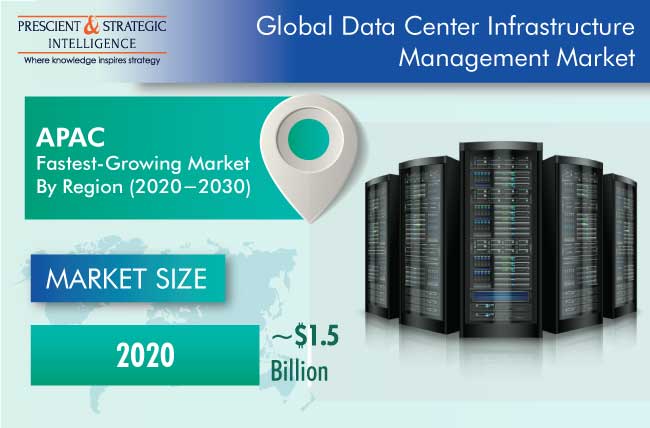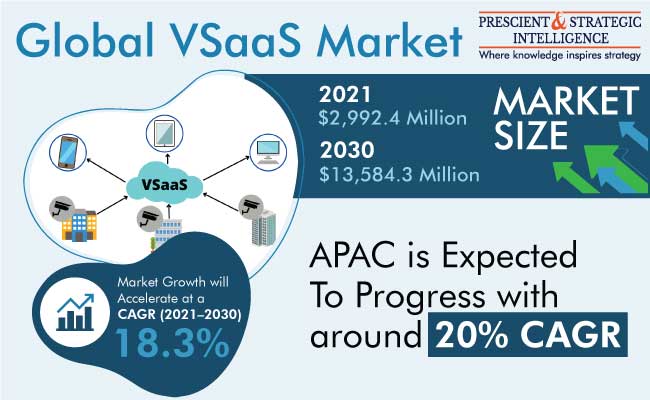. Infopreneur / Créateur de formations en ligne
Définition :
Un infopreneur transforme son savoir en produits digitaux : formations, masterclass, ebooks, abonnements.
Rôle :
Transmettre une expertise, créer une communauté et générer des revenus passifs via la vente de contenu.
Revenus :
De 5 000 € à 50 000 € / mois selon l’audience et la stratégie.
Compétences clés :
Pédagogie, marketing, storytelling, gestion de plateforme, copywriting.
Plateformes conseillées :
Educali, Kajabi, Teachable, System.io, Babafig Learning.
Évolution :
De formateur solo à créateur d’académie en ligne complète (type “Code M3 Academy”).
2. Spécialiste du marketing digital / IA Marketing
Définition :
Expert en visibilité et acquisition client grâce aux outils digitaux et à l’intelligence artificielle.
Rôle :
Créer des stratégies de publicité, d’automatisation et de contenu pour booster les ventes.
Revenus :
3 000 € à 30 000 € / mois (en agence ou consultant indépendant).
Compétences clés :
SEO, publicité (Google Ads / Meta), IA marketing, analytics, copywriting.
Plateformes conseillées :
Mailzuka, Meta Business, Google Ads, Notion, ChatGPT, Zapier.
Évolution :
Consultant indépendant → Directeur marketing IA → Création d’agence digitale automatisée.
✍🏽 3. Copywriter haut niveau
Définition :
Le copywriter est le stratège des mots : il écrit des textes qui convertissent et vendent.
Rôle :
Créer des messages percutants pour pages de vente, pubs, emails, vidéos.
Revenus :
2 000 € à 20 000 € / mois (selon contrat ou résultats).
Compétences clés :
Psychologie, storytelling, persuasion, funnels, IA rédactionnelle.
Plateformes conseillées :
Notion, ChatGPT, Jasper, Google Docs, System.io.
Évolution :
Copywriter → Expert en branding → Auteur et formateur en écriture persuasive.
4. Coach business / mindset / spirituel en ligne
Définition :
Le coach accompagne ses clients dans leur évolution personnelle, spirituelle ou professionnelle.
Rôle :
Écouter, guider, motiver, transformer la perception et les résultats de ses élèves.
Revenus :
3 000 € à 25 000 € / mois (indépendant ou programmes collectifs).
Compétences clés :
Empathie, écoute active, communication, structure d’accompagnement, leadership.
Plateformes conseillées :
Zoom, Calendly, Stripe, Educali, Babafig Sessions.
Évolution :
Coach solo → Création d’un écosystème (ex : “John Imiza Academy”).
5. Créateur de contenu monétisé (YouTube, TikTok, Runsound)
Définition :
Créateur indépendant qui partage du contenu vidéo, audio ou visuel et le monétise.
Rôle :
Informer, inspirer ou divertir tout en développant une audience fidèle.
Revenus :
500 € à 100 000 € / mois selon la niche et la communauté.
Compétences clés :
Création, montage, stratégie, storytelling, analytics.
Plateformes conseillées :
YouTube, TikTok, Runsound, Instagram, Patreon.
Évolution :
Créateur → Influenceur → Entrepreneur média / label personnel.
6. Développeur d’applications SaaS ou outils IA
Définition :
Entrepreneur tech qui crée un logiciel en ligne, vendu sous forme d’abonnement.
Rôle :
Développer, maintenir et monétiser une solution numérique utile à un public ciblé.
Revenus :
10 000 € à 200 000 € / mois selon la traction et la base d’utilisateurs.
Compétences clés :
Programmation (PHP, JS, Python), UX/UI, cloud, IA, business model SaaS.
Plateformes conseillées :
IABuzz, Firebase, AWS, Vercel, GitHub.
Évolution :
Développeur → CTO → Fondateur d’une startup IA.
7. Trader / investisseur crypto (ou Bot IA)
Définition :
Personne qui utilise les marchés financiers ou cryptos pour générer du profit.
Rôle :
Analyser, automatiser et gérer le risque via des outils IA et bots.
Revenus :
0 à 100 000 €/mois (selon capital, stratégie et volatilité).
Compétences clés :
Analyse technique, gestion du risque, automatisation, psychologie du marché.
Plateformes conseillées :
KuCoin, Binance, Phantom, Raydium, TradingView.
Évolution :
Trader → Créateur de bots (comme BABA SNIPER BOT) → Gestionnaire de fonds.
8. Créateur de marketplace ou plateforme communautaire
Définition :
Entrepreneur qui crée un écosystème où les utilisateurs interagissent, achètent ou échangent.
Rôle :
Mettre en relation des offres et des demandes, en prenant une commission.
Revenus :
5 000 € à 100 000 €/mois selon trafic et nombre d’utilisateurs.
Compétences clés :
Gestion de projet, développement web, marketing, automatisation.
Plateformes conseillées :
Babafig, Procaly, Luxarah, Collab, Runsound.
Évolution :
Créateur → PDG d’écosystème → Holding multi-plateformes (type JBCOIS).
9. Spécialiste e-commerce / dropshipping premium
Définition :
Entrepreneur qui vend des produits physiques via boutique automatisée et branding fort.
Rôle :
Trouver des produits rentables, créer une marque et automatiser les ventes.
Revenus :
2 000 € à 50 000 €/mois selon niche et publicité.
Compétences clés :
Design, storytelling, pub, logistique, IA pour la recherche produit.
Plateformes conseillées :
Shopify, WooCommerce, TikTok Ads, Meta Ads, Luxarah.
Évolution :
Boutique → Marque → Entreprise e-commerce internationale.
10. Créateur de NFT, d’art ou de musique IA (Web3 Creator)
Définition :
Artiste numérique qui exploite la blockchain pour vendre de la musique, de l’art ou des expériences uniques.
Rôle :
Créer, publier et connecter son art à un univers digital rare et traçable.
Revenus :
1 000 € à 100 000 €+ par lancement.
Compétences clés :
Design, musique IA, Web3, communication, storytelling.
Plateformes conseillées :
Runsound, OpenSea, Solsea, Foundation, Babarun (BBRN).
Évolution :
Créateur → Collectionneur → Entrepreneur Web3 visionnaire.
Définition :
Un infopreneur transforme son savoir en produits digitaux : formations, masterclass, ebooks, abonnements.
Rôle :
Transmettre une expertise, créer une communauté et générer des revenus passifs via la vente de contenu.
Revenus :
De 5 000 € à 50 000 € / mois selon l’audience et la stratégie.
Compétences clés :
Pédagogie, marketing, storytelling, gestion de plateforme, copywriting.
Plateformes conseillées :
Educali, Kajabi, Teachable, System.io, Babafig Learning.
Évolution :
De formateur solo à créateur d’académie en ligne complète (type “Code M3 Academy”).
2. Spécialiste du marketing digital / IA Marketing
Définition :
Expert en visibilité et acquisition client grâce aux outils digitaux et à l’intelligence artificielle.
Rôle :
Créer des stratégies de publicité, d’automatisation et de contenu pour booster les ventes.
Revenus :
3 000 € à 30 000 € / mois (en agence ou consultant indépendant).
Compétences clés :
SEO, publicité (Google Ads / Meta), IA marketing, analytics, copywriting.
Plateformes conseillées :
Mailzuka, Meta Business, Google Ads, Notion, ChatGPT, Zapier.
Évolution :
Consultant indépendant → Directeur marketing IA → Création d’agence digitale automatisée.
✍🏽 3. Copywriter haut niveau
Définition :
Le copywriter est le stratège des mots : il écrit des textes qui convertissent et vendent.
Rôle :
Créer des messages percutants pour pages de vente, pubs, emails, vidéos.
Revenus :
2 000 € à 20 000 € / mois (selon contrat ou résultats).
Compétences clés :
Psychologie, storytelling, persuasion, funnels, IA rédactionnelle.
Plateformes conseillées :
Notion, ChatGPT, Jasper, Google Docs, System.io.
Évolution :
Copywriter → Expert en branding → Auteur et formateur en écriture persuasive.
4. Coach business / mindset / spirituel en ligne
Définition :
Le coach accompagne ses clients dans leur évolution personnelle, spirituelle ou professionnelle.
Rôle :
Écouter, guider, motiver, transformer la perception et les résultats de ses élèves.
Revenus :
3 000 € à 25 000 € / mois (indépendant ou programmes collectifs).
Compétences clés :
Empathie, écoute active, communication, structure d’accompagnement, leadership.
Plateformes conseillées :
Zoom, Calendly, Stripe, Educali, Babafig Sessions.
Évolution :
Coach solo → Création d’un écosystème (ex : “John Imiza Academy”).
5. Créateur de contenu monétisé (YouTube, TikTok, Runsound)
Définition :
Créateur indépendant qui partage du contenu vidéo, audio ou visuel et le monétise.
Rôle :
Informer, inspirer ou divertir tout en développant une audience fidèle.
Revenus :
500 € à 100 000 € / mois selon la niche et la communauté.
Compétences clés :
Création, montage, stratégie, storytelling, analytics.
Plateformes conseillées :
YouTube, TikTok, Runsound, Instagram, Patreon.
Évolution :
Créateur → Influenceur → Entrepreneur média / label personnel.
6. Développeur d’applications SaaS ou outils IA
Définition :
Entrepreneur tech qui crée un logiciel en ligne, vendu sous forme d’abonnement.
Rôle :
Développer, maintenir et monétiser une solution numérique utile à un public ciblé.
Revenus :
10 000 € à 200 000 € / mois selon la traction et la base d’utilisateurs.
Compétences clés :
Programmation (PHP, JS, Python), UX/UI, cloud, IA, business model SaaS.
Plateformes conseillées :
IABuzz, Firebase, AWS, Vercel, GitHub.
Évolution :
Développeur → CTO → Fondateur d’une startup IA.
7. Trader / investisseur crypto (ou Bot IA)
Définition :
Personne qui utilise les marchés financiers ou cryptos pour générer du profit.
Rôle :
Analyser, automatiser et gérer le risque via des outils IA et bots.
Revenus :
0 à 100 000 €/mois (selon capital, stratégie et volatilité).
Compétences clés :
Analyse technique, gestion du risque, automatisation, psychologie du marché.
Plateformes conseillées :
KuCoin, Binance, Phantom, Raydium, TradingView.
Évolution :
Trader → Créateur de bots (comme BABA SNIPER BOT) → Gestionnaire de fonds.
8. Créateur de marketplace ou plateforme communautaire
Définition :
Entrepreneur qui crée un écosystème où les utilisateurs interagissent, achètent ou échangent.
Rôle :
Mettre en relation des offres et des demandes, en prenant une commission.
Revenus :
5 000 € à 100 000 €/mois selon trafic et nombre d’utilisateurs.
Compétences clés :
Gestion de projet, développement web, marketing, automatisation.
Plateformes conseillées :
Babafig, Procaly, Luxarah, Collab, Runsound.
Évolution :
Créateur → PDG d’écosystème → Holding multi-plateformes (type JBCOIS).
9. Spécialiste e-commerce / dropshipping premium
Définition :
Entrepreneur qui vend des produits physiques via boutique automatisée et branding fort.
Rôle :
Trouver des produits rentables, créer une marque et automatiser les ventes.
Revenus :
2 000 € à 50 000 €/mois selon niche et publicité.
Compétences clés :
Design, storytelling, pub, logistique, IA pour la recherche produit.
Plateformes conseillées :
Shopify, WooCommerce, TikTok Ads, Meta Ads, Luxarah.
Évolution :
Boutique → Marque → Entreprise e-commerce internationale.
10. Créateur de NFT, d’art ou de musique IA (Web3 Creator)
Définition :
Artiste numérique qui exploite la blockchain pour vendre de la musique, de l’art ou des expériences uniques.
Rôle :
Créer, publier et connecter son art à un univers digital rare et traçable.
Revenus :
1 000 € à 100 000 €+ par lancement.
Compétences clés :
Design, musique IA, Web3, communication, storytelling.
Plateformes conseillées :
Runsound, OpenSea, Solsea, Foundation, Babarun (BBRN).
Évolution :
Créateur → Collectionneur → Entrepreneur Web3 visionnaire.
💼 . Infopreneur / Créateur de formations en ligne
🔹 Définition :
Un infopreneur transforme son savoir en produits digitaux : formations, masterclass, ebooks, abonnements.
🔹 Rôle :
Transmettre une expertise, créer une communauté et générer des revenus passifs via la vente de contenu.
🔹 Revenus :
De 5 000 € à 50 000 € / mois selon l’audience et la stratégie.
🔹 Compétences clés :
Pédagogie, marketing, storytelling, gestion de plateforme, copywriting.
🔹 Plateformes conseillées :
Educali, Kajabi, Teachable, System.io, Babafig Learning.
🔹 Évolution :
De formateur solo à créateur d’académie en ligne complète (type “Code M3 Academy”).
💻 2. Spécialiste du marketing digital / IA Marketing
🔹 Définition :
Expert en visibilité et acquisition client grâce aux outils digitaux et à l’intelligence artificielle.
🔹 Rôle :
Créer des stratégies de publicité, d’automatisation et de contenu pour booster les ventes.
🔹 Revenus :
3 000 € à 30 000 € / mois (en agence ou consultant indépendant).
🔹 Compétences clés :
SEO, publicité (Google Ads / Meta), IA marketing, analytics, copywriting.
🔹 Plateformes conseillées :
Mailzuka, Meta Business, Google Ads, Notion, ChatGPT, Zapier.
🔹 Évolution :
Consultant indépendant → Directeur marketing IA → Création d’agence digitale automatisée.
✍🏽 3. Copywriter haut niveau
🔹 Définition :
Le copywriter est le stratège des mots : il écrit des textes qui convertissent et vendent.
🔹 Rôle :
Créer des messages percutants pour pages de vente, pubs, emails, vidéos.
🔹 Revenus :
2 000 € à 20 000 € / mois (selon contrat ou résultats).
🔹 Compétences clés :
Psychologie, storytelling, persuasion, funnels, IA rédactionnelle.
🔹 Plateformes conseillées :
Notion, ChatGPT, Jasper, Google Docs, System.io.
🔹 Évolution :
Copywriter → Expert en branding → Auteur et formateur en écriture persuasive.
🌟 4. Coach business / mindset / spirituel en ligne
🔹 Définition :
Le coach accompagne ses clients dans leur évolution personnelle, spirituelle ou professionnelle.
🔹 Rôle :
Écouter, guider, motiver, transformer la perception et les résultats de ses élèves.
🔹 Revenus :
3 000 € à 25 000 € / mois (indépendant ou programmes collectifs).
🔹 Compétences clés :
Empathie, écoute active, communication, structure d’accompagnement, leadership.
🔹 Plateformes conseillées :
Zoom, Calendly, Stripe, Educali, Babafig Sessions.
🔹 Évolution :
Coach solo → Création d’un écosystème (ex : “John Imiza Academy”).
🎧 5. Créateur de contenu monétisé (YouTube, TikTok, Runsound)
🔹 Définition :
Créateur indépendant qui partage du contenu vidéo, audio ou visuel et le monétise.
🔹 Rôle :
Informer, inspirer ou divertir tout en développant une audience fidèle.
🔹 Revenus :
500 € à 100 000 € / mois selon la niche et la communauté.
🔹 Compétences clés :
Création, montage, stratégie, storytelling, analytics.
🔹 Plateformes conseillées :
YouTube, TikTok, Runsound, Instagram, Patreon.
🔹 Évolution :
Créateur → Influenceur → Entrepreneur média / label personnel.
⚙️ 6. Développeur d’applications SaaS ou outils IA
🔹 Définition :
Entrepreneur tech qui crée un logiciel en ligne, vendu sous forme d’abonnement.
🔹 Rôle :
Développer, maintenir et monétiser une solution numérique utile à un public ciblé.
🔹 Revenus :
10 000 € à 200 000 € / mois selon la traction et la base d’utilisateurs.
🔹 Compétences clés :
Programmation (PHP, JS, Python), UX/UI, cloud, IA, business model SaaS.
🔹 Plateformes conseillées :
IABuzz, Firebase, AWS, Vercel, GitHub.
🔹 Évolution :
Développeur → CTO → Fondateur d’une startup IA.
💹 7. Trader / investisseur crypto (ou Bot IA)
🔹 Définition :
Personne qui utilise les marchés financiers ou cryptos pour générer du profit.
🔹 Rôle :
Analyser, automatiser et gérer le risque via des outils IA et bots.
🔹 Revenus :
0 à 100 000 €/mois (selon capital, stratégie et volatilité).
🔹 Compétences clés :
Analyse technique, gestion du risque, automatisation, psychologie du marché.
🔹 Plateformes conseillées :
KuCoin, Binance, Phantom, Raydium, TradingView.
🔹 Évolution :
Trader → Créateur de bots (comme BABA SNIPER BOT) → Gestionnaire de fonds.
🌐 8. Créateur de marketplace ou plateforme communautaire
🔹 Définition :
Entrepreneur qui crée un écosystème où les utilisateurs interagissent, achètent ou échangent.
🔹 Rôle :
Mettre en relation des offres et des demandes, en prenant une commission.
🔹 Revenus :
5 000 € à 100 000 €/mois selon trafic et nombre d’utilisateurs.
🔹 Compétences clés :
Gestion de projet, développement web, marketing, automatisation.
🔹 Plateformes conseillées :
Babafig, Procaly, Luxarah, Collab, Runsound.
🔹 Évolution :
Créateur → PDG d’écosystème → Holding multi-plateformes (type JBCOIS).
🛍️ 9. Spécialiste e-commerce / dropshipping premium
🔹 Définition :
Entrepreneur qui vend des produits physiques via boutique automatisée et branding fort.
🔹 Rôle :
Trouver des produits rentables, créer une marque et automatiser les ventes.
🔹 Revenus :
2 000 € à 50 000 €/mois selon niche et publicité.
🔹 Compétences clés :
Design, storytelling, pub, logistique, IA pour la recherche produit.
🔹 Plateformes conseillées :
Shopify, WooCommerce, TikTok Ads, Meta Ads, Luxarah.
🔹 Évolution :
Boutique → Marque → Entreprise e-commerce internationale.
🎨 10. Créateur de NFT, d’art ou de musique IA (Web3 Creator)
🔹 Définition :
Artiste numérique qui exploite la blockchain pour vendre de la musique, de l’art ou des expériences uniques.
🔹 Rôle :
Créer, publier et connecter son art à un univers digital rare et traçable.
🔹 Revenus :
1 000 € à 100 000 €+ par lancement.
🔹 Compétences clés :
Design, musique IA, Web3, communication, storytelling.
🔹 Plateformes conseillées :
Runsound, OpenSea, Solsea, Foundation, Babarun (BBRN).
🔹 Évolution :
Créateur → Collectionneur → Entrepreneur Web3 visionnaire.

·10K Views
·0 voorbeeld







